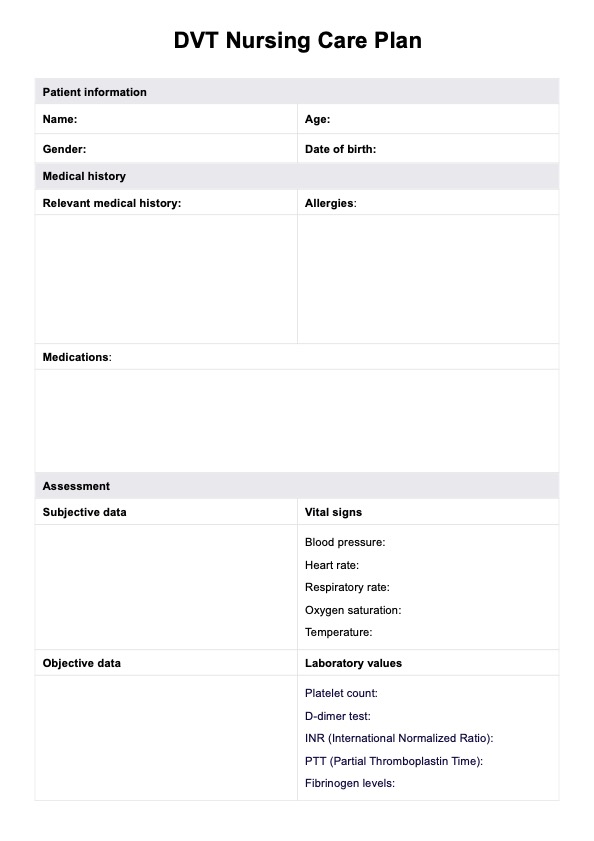While the template is particularly useful in inpatient settings, it can also be adapted for outpatient care, especially for patients undergoing anticoagulant therapy or needing ongoing monitoring.

DVT Nursing Care Plan
Looking to enhance DVT patient care? Try the printable DVT Nursing Care Plan Template. Simplify documentation and improve outcomes. Download now!
Use Template
DVT Nursing Care Plan Template
Commonly asked questions
Yes, the template is versatile and can be used at any stage of DVT, from initial diagnosis through to recovery, by adjusting goals and interventions based on the patient’s condition.
The care plan should be reviewed and updated regularly, especially when there are changes in the patient's condition, response to treatment, or if new interventions are required.
EHR and practice management software
Get started for free
*No credit card required
Free
$0/usd
Unlimited clients
Telehealth
1GB of storage
Client portal text
Automated billing and online payments











